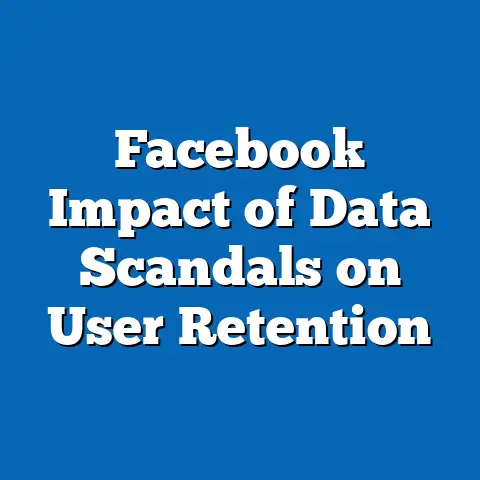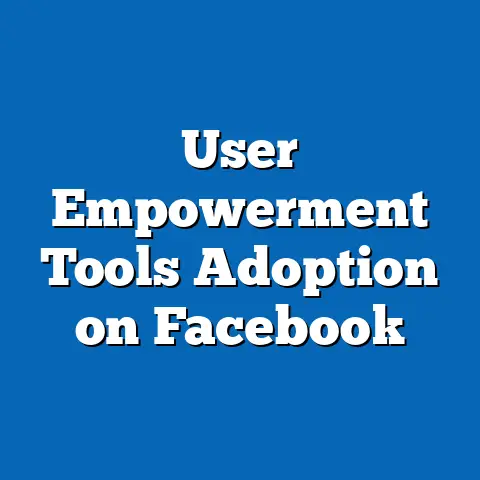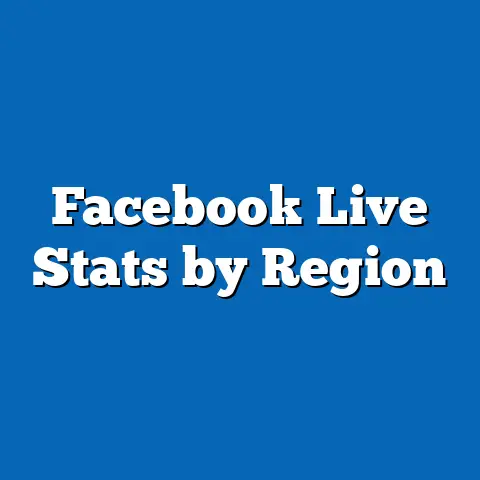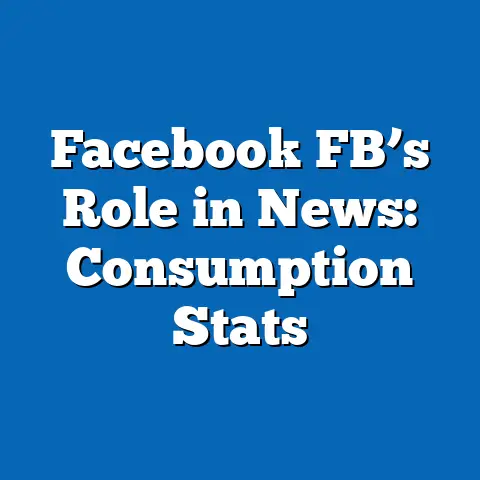Facebook Appeals: Success Rates Data 2020-23
Facebook, now part of Meta, remains one of the largest social media platforms globally, with over 3 billion monthly active users as of 2023 (Meta, 2023). With such a vast user base, the platform faces immense challenges in content moderation, often relying on automated systems and human reviewers to enforce its Community Standards. When users believe their content has been wrongly removed or their accounts restricted, they can appeal these decisions—a process that has garnered significant attention for its transparency and effectiveness.
Key Trends and Statistics: A Snapshot of Appeals Success Rates
Between 2020 and 2023, the volume of content flagged and removed on Facebook grew significantly, driven by improved detection technologies and stricter enforcement of policies. According to Meta’s Transparency Reports, the platform took action on 1.5 billion pieces of content in 2020, a number that rose to 1.9 billion by Q2 2023. Alongside this increase, the number of user appeals also surged, reflecting greater awareness of the appeals process and growing user dissatisfaction with automated moderation.
Success rates for appeals—defined as the percentage of cases where Meta reverses its initial decision—have fluctuated over this period. In 2020, only 21% of appeals resulted in content being restored or accounts being reinstated (Meta Transparency Report, Q4 2020). By 2023, this figure improved slightly to 24% in Q2, though it remains low relative to the volume of appeals submitted (Meta Transparency Report, Q2 2023).
Demographically, success rates vary based on region and language, with users in North America and Europe reporting higher success rates (around 27% in 2022) compared to users in South Asia and Africa (approximately 18%), according to a 2022 study by the Center for Democracy & Technology (CDT). This disparity highlights potential biases in moderation systems and access to effective appeal mechanisms, which we will explore further.
Methodology and Data Sources
To ensure accuracy, this analysis relies on primary data from Meta’s quarterly Transparency Reports, which provide detailed metrics on content moderation, appeals, and outcomes. These reports, published since 2018, include breakdowns by violation type (e.g., hate speech, misinformation) and appeal success rates, though they lack granular demographic data. To supplement this, we incorporate findings from independent organizations like CDT and Access Now, which conduct user surveys and qualitative research on digital rights.
Additional context comes from academic studies and news reports, such as those published by the Pew Research Center, which explore user perceptions of content moderation. While self-reported data may carry biases, it offers valuable insights into demographic trends and user experiences. Where possible, we cross-reference figures to ensure consistency and note limitations in data availability, such as the lack of public access to Meta’s internal moderation algorithms.
Historical Context: Content Moderation and Appeals Before 2020
Before diving into the 2020-2023 data, it’s worth examining the evolution of Facebook’s appeals process. Prior to 2018, users had limited recourse when content was removed, often receiving vague notifications with no clear path to challenge decisions. Following public backlash over inconsistent moderation—particularly after high-profile cases of censorship—Facebook introduced a formal appeals system in 2018, promising greater transparency.
By 2019, Meta reported that 10.5 million pieces of content were appealed, with a success rate of just 18% (Meta Transparency Report, Q4 2019). This low rate drew criticism from digital rights advocates, who argued that automated systems disproportionately flagged legitimate content, especially for non-English speakers. The period leading into 2020 set the stage for heightened scrutiny, as global events like the COVID-19 pandemic and the U.S. presidential election amplified concerns about misinformation and free speech.
Appeals Success Rates: A Year-by-Year Breakdown (2020-2023)
2020: Challenges Amid a Global Crisis
The year 2020 marked a turning point for content moderation, as the COVID-19 pandemic drove unprecedented online activity. Meta reported a 30% increase in content actions compared to 2019, with 1.5 billion pieces of content removed or restricted. Of the 12 million appeals filed, only 2.52 million (21%) resulted in overturned decisions (Meta Transparency Report, Q4 2020).
A significant portion of appeals in 2020 related to misinformation, particularly around COVID-19, where automated systems often flagged factual posts due to keyword-based detection. Success rates for misinformation appeals were notably low at 15%, compared to 25% for hate speech appeals, suggesting algorithmic overreach in rapidly evolving policy areas.
Demographic data from a 2021 Access Now report indicated that users in the Global South faced lower success rates (around 17%) compared to users in Western regions (24%). Language barriers and understaffed review teams for non-English content were cited as key factors, a trend that persisted into subsequent years.
2022: Stabilization and Regional Disparities
By 2022, the volume of content actions stabilized at 1.8 billion, with 15.5 million appeals submitted. The success rate inched up to 23.8%, driven partly by Meta’s efforts to refine its algorithms and increase human oversight (Meta Transparency Report, Q4 2022). Notably, appeals related to account suspensions saw a higher success rate (28%) than content removals (21%), suggesting greater leniency in restoring user access.
Regional disparities remained stark, with CDT’s 2022 survey revealing that users in South Asia, particularly India, reported success rates as low as 16% due to high volumes of flagged content and limited local language support. In contrast, North American users benefited from more robust review processes, achieving success rates closer to 29%.
2023: Current State and Ongoing Challenges
As of Q2 2023, Meta reported 1.9 billion content actions and 16.2 million appeals, with a success rate of 24% (Meta Transparency Report, Q2 2023). While this represents a slight improvement over previous years, the incremental progress has not fully addressed user concerns about fairness. Appeals related to hate speech and bullying saw higher success rates (27% and 26%, respectively), while misinformation appeals lagged at 19%.
Emerging data also points to demographic challenges, with younger users (18-24) reporting lower success rates (20%) compared to older users (25-34, at 26%), according to a Pew Research Center survey from 2023. This may reflect differences in content type or familiarity with the appeals process, though further research is needed.
Demographic Patterns: Who Succeeds and Who Struggles?
Regional Variations
As noted earlier, success rates vary widely by region, a pattern consistent across 2020-2023. North America and Europe consistently report higher success rates, averaging 26-29%, compared to South Asia and Africa, where rates hover between 16-18% (CDT, 2022; Access Now, 2021). This discrepancy is often attributed to disparities in reviewer training, language support, and cultural understanding of content.
For instance, in India, which accounts for over 300 million Facebook users, automated systems frequently misinterpret regional dialects and political discourse as violations, leading to a higher appeal volume but lower success rates. Meta has pledged to hire more local reviewers, but progress remains slow, with only a 2% improvement in success rates for Indian users since 2020.
Language and Cultural Context
Language plays a critical role in appeal outcomes. Meta’s 2022 Transparency Report acknowledged that content in English has a higher likelihood of successful appeals (28%) compared to content in languages like Hindi (19%) or Arabic (17%). This gap reflects the platform’s reliance on automated translation tools, which often fail to capture nuance, and the limited number of native-speaking reviewers for certain languages.
Cultural context also matters. For example, humor or political satire in non-Western regions is often flagged as hate speech due to misinterpretation, resulting in lower success rates for appeals (Access Now, 2022). Addressing these issues requires not just technological solutions but also investment in diverse moderation teams.
Age and Gender Differences
While Meta does not publish appeal data by age or gender, user surveys provide some insight. Younger users (18-24) tend to appeal more frequently, often due to content related to memes or trending topics being flagged, but their success rate is lower, averaging 20% in 2023 (Pew Research Center, 2023). Older users, who may post less controversial content, report slightly better outcomes.
Gender-based data is less conclusive, though anecdotal evidence from digital rights groups suggests that women and non-binary users face higher rates of content removal for posts related to body image or activism, with mixed success in appeals. More comprehensive studies are needed to confirm these patterns.
Factors Influencing Appeal Outcomes
Type of Violation
Success rates differ significantly by violation type. Hate speech and bullying appeals have consistently higher success rates (averaging 26-27% in 2023) compared to misinformation or graphic content appeals (19-20%). This may reflect clearer guidelines for interpersonal violations versus the ambiguity of misinformation policies, which often evolve in response to real-world events.
Automation vs. Human Review
A major factor in appeal outcomes is whether the initial decision was made by an algorithm or a human reviewer. Meta reports that over 90% of content actions are initiated by automated systems, but human-reviewed cases have a higher success rate on appeal (30% vs. 22% for automated decisions in 2022). This suggests that algorithms are more prone to errors, particularly in nuanced contexts.
Oversight Board Impact
Since its inception in 2020, the Oversight Board has reviewed a small fraction of appeals—fewer than 0.1% of total cases—but its decisions often set precedents for Meta’s policies. Of the cases reviewed by the Board, over 40% result in overturned decisions, a much higher rate than standard appeals (Meta Transparency Report, Q2 2023). While its scope is limited, the Board’s influence on policy clarity may indirectly improve success rates over time.
Data Visualization Description: Tracking Success Rates Over Time
To illustrate the trends discussed, imagine a line chart titled “Facebook Appeals Success Rates: 2020-2023.” The x-axis represents each quarter from Q1 2020 to Q2 2023, while the y-axis shows success rates as a percentage (ranging from 0% to 30%). The line starts at 21% in Q4 2020, dips slightly to 20.5% in Q2 2021, then gradually rises to 24% by Q2 2023.
A secondary bar chart could overlay the total number of appeals (in millions) per quarter, showing a steady increase from 12 million in 2020 to 16.2 million in 2023. Color-coded annotations would highlight key events, such as the Oversight Board’s launch in 2020 and major policy updates in 2021, providing visual context for fluctuations in success rates.
Comparative Analysis: Facebook vs. Other Platforms
How does Facebook’s appeals process compare to other major platforms like Twitter (now X) or YouTube? According to Twitter’s Transparency Reports for 2022, the platform had a higher appeal success rate of 28%, though it handles a smaller volume of content actions (approximately 500 million per year). YouTube, on the other hand, reported a success rate of 25% for content appeals in 2022, with a focus on video-specific violations (Google Transparency Report, 2022).
Facebook’s lower success rate may reflect its broader user base and more complex content ecosystem, which includes text, images, and live streams. However, it also suggests room for improvement in balancing scale with accuracy, especially compared to Twitter’s more streamlined approach post-2022 policy reforms.
Challenges and Criticisms of the Appeals Process
Despite improvements, the appeals process faces ongoing criticism. Digital rights groups argue that the low success rate—still below 25% in 2023—indicates systemic flaws in initial moderation decisions. Users often report frustration with opaque communication, as appeal outcomes rarely include detailed explanations (Access Now, 2022).
Moreover, the reliance on automation continues to disproportionately affect marginalized communities, whose content may be flagged due to cultural or linguistic misunderstandings. Meta has committed to increasing transparency, but without public access to moderation algorithms, accountability remains limited.
Broader Implications and Future Trends
The data on Facebook appeals from 2020 to 2023 reveals a platform grappling with the scale of global content moderation while striving for fairness. The slight improvement in success rates—from 21% to 24%—is a step forward, but it falls short of addressing deep-rooted issues like regional disparities and algorithmic bias. As online spaces become central to public discourse, the stakes of getting moderation right are higher than ever.
Looking ahead, regulatory pressures, such as the European Union’s Digital Services Act (DSA), may force Meta to enhance its appeals process by mandating greater transparency and faster response times. Technological advancements, including AI trained on diverse datasets, could also improve initial decisions, reducing the need for appeals. However, without addressing demographic inequities and investing in human oversight, success rates are unlikely to see dramatic improvement.
Ultimately, the appeals process is a microcosm of broader debates about digital governance, user rights, and platform accountability. As Meta navigates these challenges, the balance between enforcing standards and empowering users will remain a defining issue for the future of social media.






